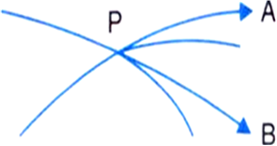Given,
where, r is the distance between two charges.
Using the formula,
Repulsive in nature since both charges are positive.
Given,
Torque is given by

Hence, two field lines never cross each other.
The electrostatic force on a small sphere of charge 0.4 μC due to another small sphere of charge –0.8 μc in air is 0.2 N.
(a) What is the distance between the two spheres?
(b) What is the force on the second sphere due to the first?
(a) Given,
Now using the formula,
Hence,
where, r is the distance between two spheres.
(b) Force on the second sphere due to the first is same, i.e., 0.2 N because the charges in action are same and force is attractive as charges are unlike in nature.
